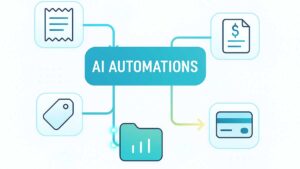Introduction
Navigating the financial landscape of modern commerce requires more than just balancing numbers. It demands clarity. One of the most common sources of confusion in pricing is the difference between tax inclusive and tax exclusive methods. At first glance, these concepts might seem interchangeable, but their implications can significantly impact budgeting, invoicing, and consumer trust.
Whether you’re a business owner setting prices, an accountant ensuring compliance, or a consumer trying to make sense of your receipt, understanding how tax is applied is key to making informed decisions. Let’s break this down and bring clarity to the chaos.
What is Inclusive Tax?
Tax inclusive pricing means the tax is already included in the displayed price. For example, if a product is listed at $110 with a 10% tax rate, the base price is $100, and the remaining $10 is the tax. The customer pays exactly what they see—no surprises at checkout.
Where and Why It’s Used
- Retail goods: Consumers prefer seeing the final amount upfront.
- Hospitality: Restaurants often include gratuity and taxes in the listed price.
- International e-commerce: Many global marketplaces list tax-inclusive prices for consistency.
- Legal mandates: Certain jurisdictions require all prices to include tax to ensure transparency.
What is Exclusive Tax?
Tax exclusive pricing means the displayed price does not include tax. Using the same scenario, if a product is listed at $100 and the tax rate is 10%, the customer will pay $110 at checkout.
Common Contexts
- U.S. Retail: Prices on shelves are typically pre-tax.
- Wholesale pricing: Taxes vary by region, so buyers handle the tax.
- B2B transactions: Businesses favor transparent tax breakdowns for reporting.
- Promotional pricing: Advertisers use pre-tax prices to highlight competitive rates.
Key Differences Between Inclusive and Exclusive Tax
| Feature | Tax Inclusive | Tax Exclusive |
|---|---|---|
| Displayed Price | Includes tax (final amount) | Excludes tax (base price) |
| Tax Calculation | Tax already factored in | Tax added at checkout |
| Transparency | Tax is hidden in the total | Tax is shown separately |
| Common Use Cases | B2C, hospitality, global sales | B2B, wholesale, U.S. retail |
| Customer Experience | Simple and predictable | Clear but may surprise at checkout |
In B2C contexts, tax-inclusive pricing builds trust through simplicity. In contrast, tax-exclusive pricing is favored where compliance and flexibility are key.
How to Calculate Inclusive and Exclusive Tax
Inclusive Tax Calculation
- Scenario: A shirt costs $110, tax rate is 10%.
- Formula: Base price = Total price / (1 + Tax rate)
- Calculation: $110 / 1.10 = $100 base price
- Tax value: $110 – $100 = $10
Exclusive Tax Calculation
- Scenario: A product costs $100, tax rate is 10%.
- Formula: Final price = Base price × (1 + Tax rate)
- Calculation: $100 × 1.10 = $110 total price
Common Mistakes
- Wrong approach: Subtracting 10% from the inclusive price leads to incorrect base values.
- Correct method: Always use division for inclusive tax and multiplication for exclusive tax.
Pros and Cons for Businesses and Consumers
Tax Inclusive
Pros:
- Customer-friendly
- Meets legal requirements in many countries
- No surprises at checkout
Cons:
- Lack of visibility into tax amount
- Complicated for multi-region pricing and tax reporting
Tax Exclusive
Pros:
- Transparent tax breakdown
- Easier accounting and cross-border invoicing
Cons:
- Can frustrate customers expecting an all-in price
- Perceived price may appear lower than the actual cost
Common Questions (FAQ)
What does “inclusive of tax” mean?
It means the total price shown already includes applicable taxes. No additional charges are added at checkout.
What does “exclusive of tax” mean?
It means tax is not included in the listed price. It will be calculated and added separately.
How does tax-inclusive pricing affect invoices?
Invoices might only show a single amount. For transparency, it’s best to show both base price and tax amount.
Which pricing method should I use?
For B2C, tax-inclusive pricing offers clarity. For B2B or international sales with complex tax rules, tax-exclusive is more practical.
Practical Tips for Implementation
- Understand your audience: Tailor pricing to consumer expectations.
- Check regulations: Local tax laws might dictate which pricing method is required.
- Maintain transparency: Even with inclusive pricing, offer receipts that clearly show the tax component.
- Use smart tools: Apps like SparkReceipt simplify reverse calculation equations, tax reporting, and invoice creation.
Conclusion
The difference between tax inclusive and tax exclusive pricing goes beyond semantics. It shapes perception, financial planning, and compliance. For businesses, it’s about choosing the right method to meet both regulatory and customer needs. For consumers, it’s about understanding what they’re actually paying for.
Make your pricing clear, your invoices cleaner, and your customers confident.
Looking to stay ahead of your finances without the spreadsheet headache? SparkReceipt makes it easy to capture all your expenses, receipts, and invoices—while automatically breaking down taxes for claiming them, reporting to your accountant, or simply keeping control of your business finances.




